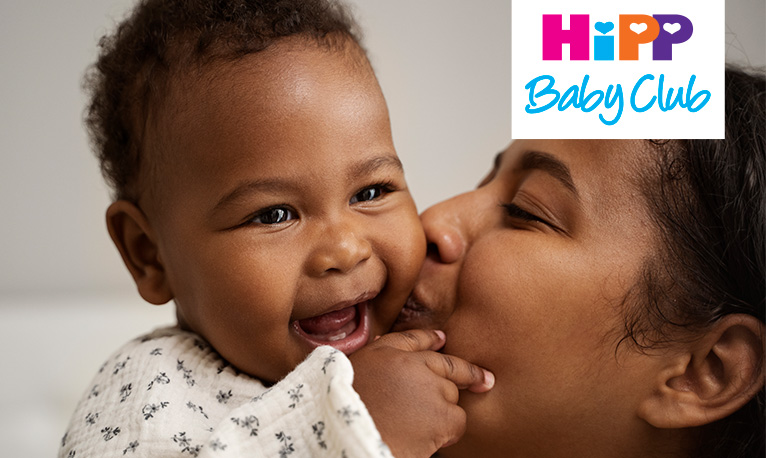Examples & ideas on games that support learning
Development | | Gail Miles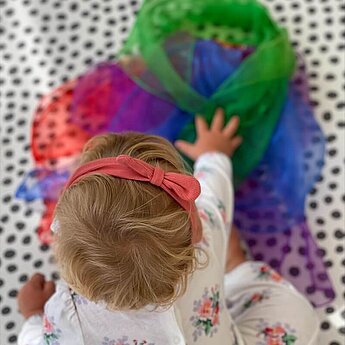
By Gail, The Playful Expert
Does your 21-month-old have an endless supply of energy? Do they become easily bored and demand your attention throughout the day? Choosing engaging play activities with an educational element needn’t feel daunting. Read this article for some brilliant ideas that won’t take hours to set up or clean up!
21-month-old toddlers are full of energy, they are extremely active and curious, seeing each day as a new adventure. Learning in their world should be fun! It should help to spark their imagination and give them a real sense of adventure. They are at the stage where everything is brand new and exciting. But finding activities that hold their focus and allow them the independence they crave, whilst still giving them mental stimulation, can be challenging.
Research has shown how children at play are absorbed in what they are doing; they are learning without even realising it. They learn to share, take turns, work with others, and problem solve; all essential skills needed for their lives ahead. They learn by imitating adult behaviours, practicing motor skills and processing emotional events, as they learn all about the world around them.
Play is vital for them to learn and develop. It is essential for their social, emotional, physical and cognitive development. It helps their brains to develop and their language and communication skills to mature. It nurtures self-worth by developing a sense of their own abilities and it helps them to feel good about themselves. Try out these ideas and start building more play-based learning into your days!
Sensory play
Children learn through all their senses - through tasting, touching, seeing, hearing and smelling. They will watch those around them and copy language and behaviour. This is a great age to provide opportunities to develop their senses further. The activities below will stimulate the different senses your child has in different ways:
Taste-safe Messy Play
Messy play is such a great way to facilitate all kinds of learning in an enjoyable way. Your 21-month-old toddlers are still very much at the age of exploring things using their mouths. So why not provide a taste-safe play opportunity for them to have fun with?
Create a farm or play scene using fruit, vegetables, porridge oats, cereals, water or cooked ingredients like spaghetti, quinoa and rice (which can be dyed using food colouring). You can even create taste safe mud – from mixing cocoa powder, flour and water together in a bowl (click here for a link to @the_playful_expert). This is bound to go down well with your little one! A top tip here is to do it on a cleaning day, so that you don’t need to clean up twice, or by doing it outside or with a sheet/shower curtain underneath, so that any mess can be contained and cleaned up easily. You can also have a bowl of water and towel ready to clean your little one up at the end if needed.
Playing with fruits and spices
Children love to use paint, but why not stimulate the visual and tactile senses too? Instead of using the normal paint set, fruits and spices can be used to create coloured paints that smell and taste amazing too. Some examples can include paprika, blackberries, strawberries and turmeric. Once chosen, you can mash them up and mix them with water to create your own paints. They can use a large paintbrush or even some leaves or feathers here to have fun creating masterpieces, but don’t be surprised if they would prefer getting stuck in with painting with their hands or feet. Have a bowl ready so that you can clean up easily once finished.
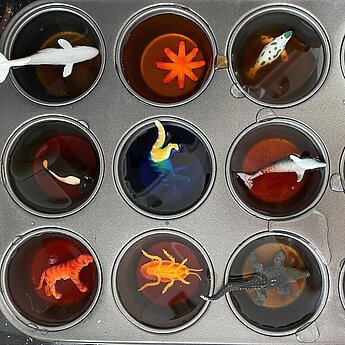
Dinosaur (or animal) adventures
For this activity you can place small items, such as dinosaurs or animals in jelly or in water to set/freeze overnight for your child to explore the next day. They will love feeling the texture of the jelly or ice and will find it so fascinating trying to set the animal free!
Dramatic/pretend/role play
This is the perfect age to encourage your child to begin make-believe play. Children are naturally imaginative and can be seen to happily talk away to someone on their toy phone, drive a car, or make a teddy or doll a pretend drink. Role play games help children to make sense of the world. They act out situations before they happen and copy what they see around them. It contributes to a child’s emotional development as it allows them to see life from a different viewpoint and learn how relationships work and how people interact with one another.
Playing dress up with old clothing
Provide opportunities for role play through using clothing and accessories that you already have at home. You don’t need to buy expensive costumes to do this fun activity. Using your own clothing will go down a treat. You could give them clean make up brushes or a hairbrush whilst you’re getting ready, so that so that they can look in the mirror and pretend they are getting ready too!
Build a camp tent using blankets and cushions
There’s no need to buy a pop-up tent or fort kit, you have all you need already! Grab those kitchen chairs or sofa cushions and a couple of blankets or sheets and you have a castle, house or animal enclosure, right there before you. Or try something that will definitely inspire imagination – a cardboard box! Cut out a ‘door’ and you’ve got an instant—and cheap—indoor playhouse. You could even decorate it and include windows and other details with pens and crayons or paint! Your 21-month-old will have fun in a cosy little area that they can climb into. They may enjoy taking a snack in there to feed to their teddies or to create a little reading corner with their favourite books to share.
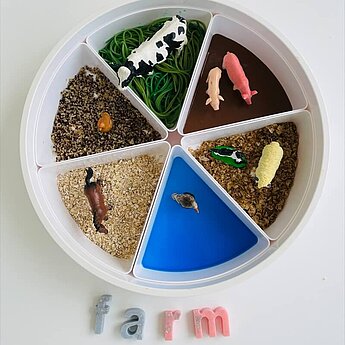
Sand, Water or Mud Play
Get those little hands stuck in to some multi-sensory play that is guaranteed to keep your little one occupied for a while. Providing sand, water, mud or other sensory bases can be an early introduction to science and maths. They will learn that water is a liquid and that it can be measured in different sized containers. Simply grabbing some containers from the kitchen cupboards and popping them into a washing up bowl will be the best part of your toddler’s day!
Outdoor Play
Playing outdoors and connecting with nature is extremely beneficial and necessary for a child’s development as it helps them to learn about the world around them. It also helps to meet their multi-sensory needs. They can learn lots about the everchanging environment and it gives them the opportunity to use their whole body and develop gross motor skills too. Whether it’s messy play, creative or even role play, it’s an essential part of their learning. Why not go hunting for insects and objects in your garden or local area? This will help them to slow down, look more closely at what is around them and learn about things in more detail. You could have a list with pictures on to help them start identifying objects and learning the associated vocabulary.
Gross motor skills
Running, climbing, dancing and playing ball games all help to develop body movement, co-ordination skills, strength and flexibility. Here are some ideas to encourage your toddler to get up and move about, expending some of that endless energy!
Homemade Obstacle Course
21-month-olds are at a stage where they are quickly learning how much they enjoy climbing! While this is definitely fun and can keep them happily occupied, it can be dangerous if they get up too high or climb onto something that isn’t stable. A great way to get the benefits of this activity without having the risk, is to create your own obstacle course at home. Soft items like sofa cushions and other climb-safe objects such as blankets and pillows can be used. This will allow your little one to have a safe place to explore and climb whilst being active.
Hide and Seek
Around this age, your toddler may also enjoy playing hiding games. They love to remember where things are hidden and find it fascinating to try and understand where an item has gone when they can’t see it anymore. These games help them to understand that even when they can’t see you anymore, you’re still there. This is known as object permanence, which describes a child’s ability to know that objects continue to exist even though they can no longer be seen or heard. Playing hide and seek will strengthen this understanding and will give your child the thrill of waiting for you to spot them hiding behind the sofa.
Fine Motor Skills
Fine motor skills refer to the coordination between a child’s small muscles, like those in their hands or wrists and their eyes. Using different play tools such as sieves, tweezers or plastic squeezy bottles and manipulating objects such as volume dials, help to develop those all-important fine motor skills and the muscles involved in carrying them out.
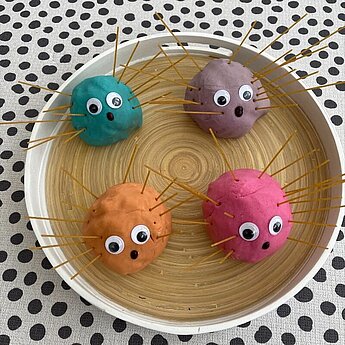
Playdough and Loose Parts Play
Give your tot a lump of playdough and some small loose parts (size dependent, of course, for safety) for them to create with. They will have so much fun! You will be surprised at what they create from their imagination whilst developing those all-important hand and wrist muscles.
Building Blocks and Stacking Cups
Something as easy as stacking and knocking over blocks or cups allows toddlers to discover science and maths concepts, such as gravity and balancing. It can also be extended to practise counting and identifying and naming colours, shapes and sizes, whilst putting things in order and developing their logic too.
Posting Items
Try popping things like food clips, pom poms, balls or small objects into boxes and containers, then let your little one empty them out. If you add lids, they will spend even longer taking them in and out and trying to put the lid on afterwards! This helps them develop their hand-eye coordination too. You can extend this further by encouraging them to use large child-friendly tweezers to practise picking up items.
Lift the Flap Books
Toddlers love to interact with books. Ones with mirrors, different textured surfaces and flaps that lift are the most interesting for your child at this age. Try ones that talk about concepts such as letters, numbers, parts of the body, colours and shapes alongside ones with lots of simple rhymes and rhythms, so your child can not only develop those fine motor skills, but learn in other areas at the same time.
Colour Matching Activity
You can create a colour matching activity by putting down a solid coloured object and having your little one find objects around the house that are the same colour to place on top of it. You can extend this by finding items that are different in size and shape, but be sure to make the objects you are comparing quite different in size and shape at this age, so they can easily see the difference.
Vehicle Ramp
Creating a ramp from a board, piece of cardboard or large book is a very simple but great activity. Your child will enjoy watching toy cars and vehicles or balls and other objects roll or slide down the ramp time and time again.
Puzzles
Puzzles are brilliant for your child at this age. They don’t only develop fine-motor skills but help your child to problem solve too. You can make them more exciting by wrapping them up in paper or foil, so that it makes your child feel like it is something new and exciting, especially if the puzzle has been played with several times before. Why not try making your child a puzzle from some scrap cardboard, so that you can match it completely to their interests?
Music
Singing and playing musical instruments helps to develop children’s rhythm, their listening skills and hearing. I recommend active songs, where you combine words and actions as they develop coordination, language and memory in one fun energetic package. You can boost their vocabulary too by singing songs and leaving a word out for your little one to complete themselves. For example, ‘Humpty Dumpty sat on a ____’.
Make Music with Homemade Instruments
Homemade instruments such as shakers are really easy to make and they allow your child to have fun without having to go out and spend lots of money too! All you need is a container, such as an empty plastic bottle or a cup with a lid, and some rice, beans, or lentils. Try adding other items such as pom poms, glitter or some beads or buttons if the container is clear to add an interesting visual element to the fun too.
Providing children with a range of items to play with will help them to learn in so many ways. Be sure to choose activities that they enjoy, tap into their interests and repeat activities they loved – let them learn through play their way!

